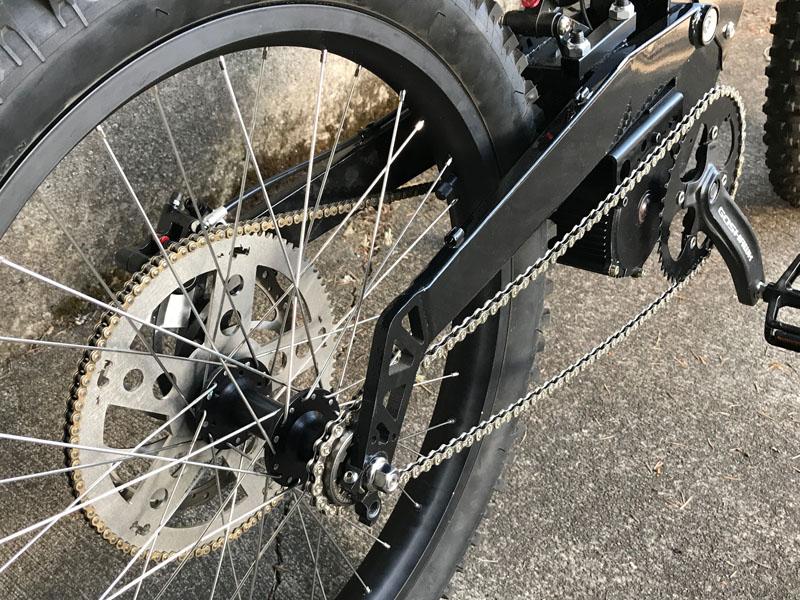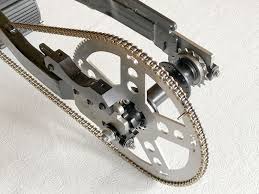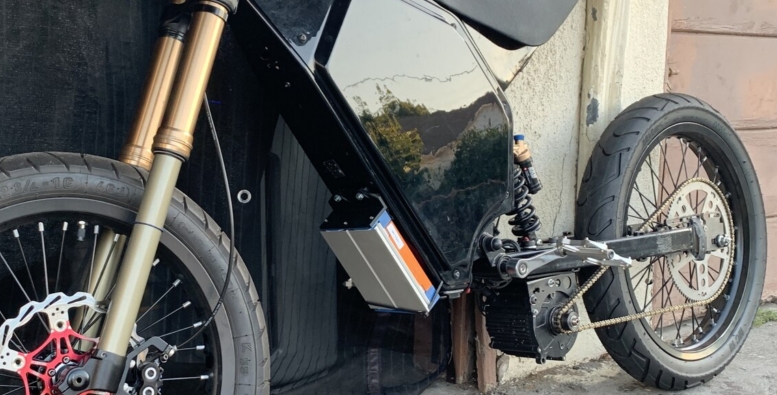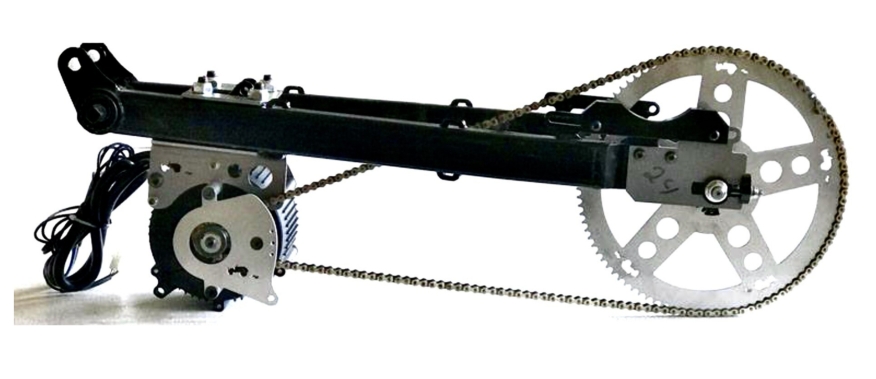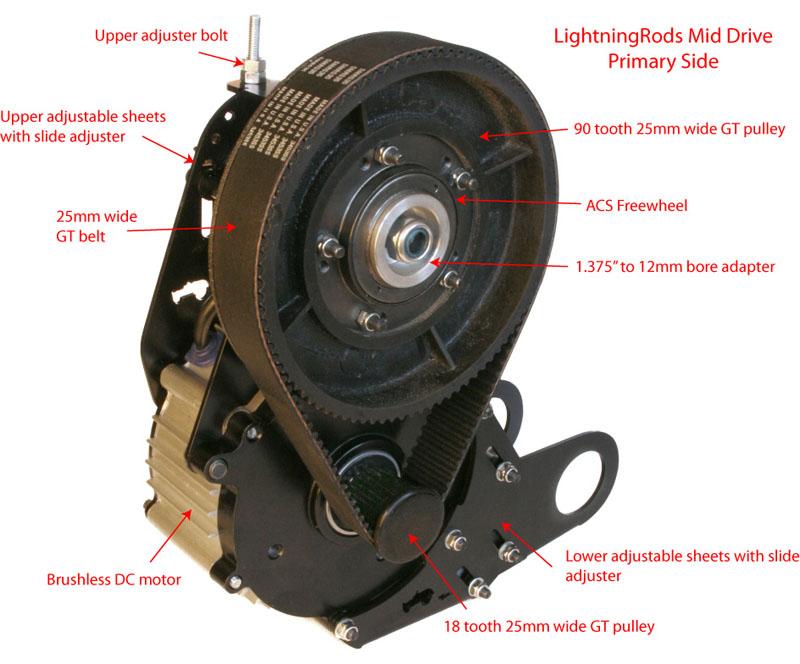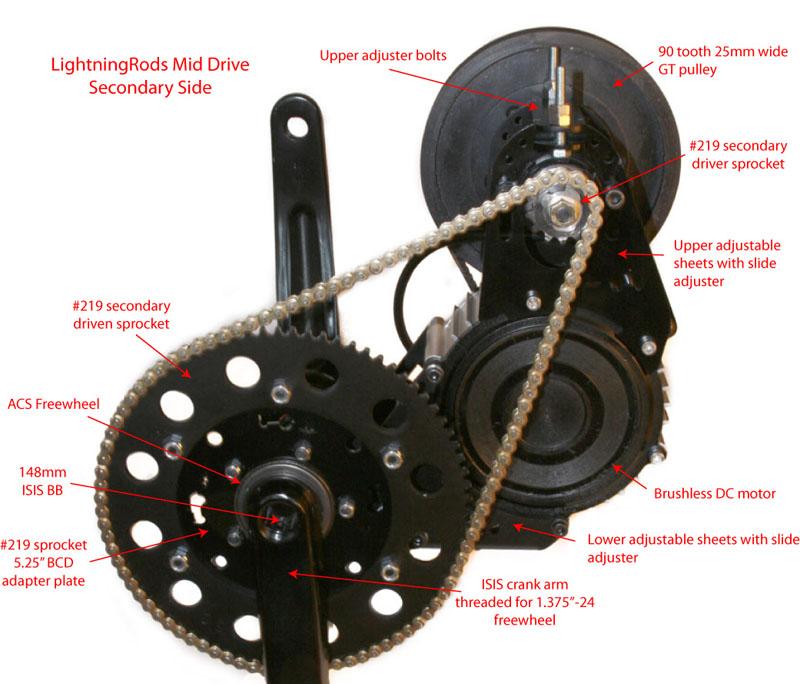Noob here especially about how drivetrains work so please be gentle
Would it be possible to set up a Lightning Rods Big Block with its left hand heavy chain driving the rear wheel
completely separately, from a **mechanical** POV, from the human-pedaling force driving a relatively weak IGH ?
Application is a heavy tandem / cargo with occasional very long climbs up steep mountain roads.
So I want that crazy high torque when needed, but reckon that would likely destroy the gearing hub.
So, ignorance showing, does this mean two freehubs?
or a freehub plus a freewheel or something?
Please don't argue against the IGH idea - for purpose of this thread anyway, assume a thought experiment to isolate out this one specific question.
I'm fine with a single **very** low gear for the motor, and if that means basically human power only on the flats, once past 15mph, that is also fine
but ideas for getting shifting, say maybe 3 gears would be welcome, if it doesn't complicate things too much?
Would also like strong regen for safe drag braking on long descents minimizing pad wear.
If none of this is sane just say so 8-D
Would it be possible to set up a Lightning Rods Big Block with its left hand heavy chain driving the rear wheel
completely separately, from a **mechanical** POV, from the human-pedaling force driving a relatively weak IGH ?
Application is a heavy tandem / cargo with occasional very long climbs up steep mountain roads.
So I want that crazy high torque when needed, but reckon that would likely destroy the gearing hub.
So, ignorance showing, does this mean two freehubs?
or a freehub plus a freewheel or something?
Please don't argue against the IGH idea - for purpose of this thread anyway, assume a thought experiment to isolate out this one specific question.
I'm fine with a single **very** low gear for the motor, and if that means basically human power only on the flats, once past 15mph, that is also fine
but ideas for getting shifting, say maybe 3 gears would be welcome, if it doesn't complicate things too much?
Would also like strong regen for safe drag braking on long descents minimizing pad wear.
If none of this is sane just say so 8-D


